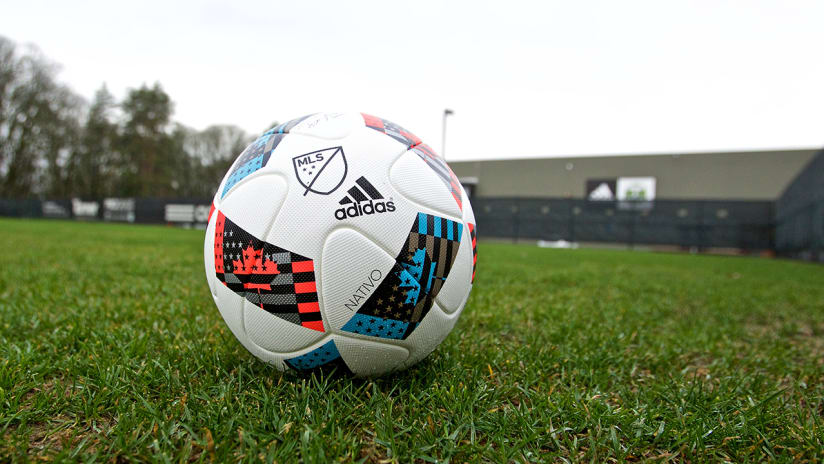While it may be cold outside, gets dark too soon, and there’s no Portland Timbers or Thorns FC soccer to be had for some time still, the world between your ears can still be soccer heaven, or at least pretty solid soccer entertainment. There was a time a decent soccer book was hard to find—now there are almost (but not quite) too many. Here are seven that deserve your attention (not including Nick Hornby’s Fever Pitch, which started the whole thing in 1992, because it hardly needs the promotion).
The Damned Utd, by David Peace
Contemporary classic of football fiction.
Deep and wise and weird and funny, David Peace writes about the muddy and utterly foreign world of 1970s English football (as foreign from the EPL as from Portland, Oregon), but he also writes about pride, exhilaration, desperation, disappointment and dedication. The Damned Utd (also a movie, and a great one) is about the 44 days in 1975 that Brian Clough succeeded legendary Don Revie to managed then-dominant Leeds United. Clough had transformed Derby County into a European power (an astounding feat in any era) and fancied himself the future of English football. He was right, as he would prove later in the decade with Nottingham Forest, but he was wrong about Leeds, and Leeds was wrong for him. His comedown is brutal, as is Peace’s treatment of Leeds’ players and management.
Rock ’n’Roll Soccer: The Short Life and Fast Times of the North American Soccer League, by Ian Plenderleith
The NASL’s much-needed “Behind the Music”documentary in book form.
Sometime in the ’70s, the Toronto Blizzard enticed fans to come to a game to see an armadillo race. The Rochester Lancers invited the actress Gina Lollobrigida to attend a game. In 1977, the Washington Diplomats hired a witch doctor (and named him “Chief Diplascore”) to put spell on the other team. The Oakland Stompers cheerleaders were called the Corkpoppers, the Memphis Rogues had the Vogues, and the Fort Lauderdale Strikers had the Striker Psychers. San Jose’s mascot, Krazy George, made his entrance to the game via camel, helicopter, hang glider and police car. He once showered the other team with beer as they prepared for overtime. Washington’s Paul Cannell once mooned a referee for giving him a yellow card. The whole book reads like this, somehow treating the 1970s NASL as a serious soccer league and as a total comedy. While it takes time to respectfully highlight the 10 best players and games in league history (not a Timbers mention in them, though it does note 1977’s Soccer Bowl at Civic Stadium as the best NASL game ever and “one of the most entertaining cup finals ever played”). The book lives up to its title—it’s fun and funny—and it has a foreword by Rodney Marsh.
Distant Corners: American Soccer’s History of Missed Opportunities, by David Wangerin
A fascinating ride through a century of efforts at landing the game on these shores.
The American soccer history no one talks about: The primal years of the U.S. Open Cup (during the ’20s, “10,000 was not uncommon for finals”); the American Soccer League in the ’20s and ’30s; a mid-century effort at promoting college soccer to prominence, which included a New Year’s Day “soccer bowl” at the St. Louis Cardinals’ ballpark in 1950 (the first of which drew 4,600 to see Penn State play San Francisco—a fair crowd considering the cold weather and that the average major-league baseball crowd that year was around 10,000). That year, the college game replaced throw-ins with kick-ins. In the late ’40s, the New England Intercollegiate League authorized one-handed throw-ins. In 1952, the Midwestern Conference did away with offside for a year. From 1925 to 1972, NCAA soccer was played in four 22-minute quarters. There’s an astounding tale from 1946 in which the owners of the Dodgers and the Cubs tried to start a league to play in their stadiums that crumbled amidst typical soccer squabbling that led the pro game’s greatest advocate at the time, one Tom Cahill, to lament that “I’ve known, everyone in soccer has known, that until there are adequate stadium facilities, the game will never be a financial success.” And that was 1946!
- READ: From the Stands: Supporter-run Booked! soccer library in the Rose City
Among the Thugs, by Bill Buford
The book about late ’80s/early ’90s English hooligan culture
Scary, funny, smart and cool—but mostly scary. At a time when British football was about as life-threatening a subculture as the planet had to offer, Buford—an American—went to the matches, put himself in harm’s way, and lived to tell the tale. A few sentences from a trip to Chelsea capture the vibe: “The experience of the whole match is unpleasant—nasty, unsettling. It is cold and windy: there is grit in my eyes, and I can feel it in my hair and underneath my clothes. There is constant movement: too many people have been admitted—a familiar ploy to get them off the streets—which makes it difficult to do more than try and remain upright and fight for a view of the match…. Someone has taken to throwing spark plugs, and a supporter near me is struck in the head by one, slicing his forehead.” The book culminates in a trip to Italia ’90. It read like a trip to the end of the soccer world—“The English supporters seemed not to think much of the Italian guns…. I stood back, while everyone rushed forward, stones and bottles in hand”—but it stands now as a phenomenal adventure and a reminder of how lucky we are that the game (mostly) survived a dark, dark time.
Playing for Uncle Sam: The Brits’Story of the North American Soccer League, by David Tossell
Detailed accounts of ’70s NASL seasons and the men and teams that made them happen.
The common legend is the New York Cosmos of Pele, Franz Beckenbauer, Carlos Alberto and Georgio Chinaglia gallivanted through the heartland like a soccer Harlem Globetrotters, deigning to entertain curious Americans between exhibitions against worthier foreign opposition. This is true, but it’s not the entire truth. While the Cosmos helped get the NASL on TV and draw big crowds, the league would not have had the success it did if not for the teams in Portland, San Jose, Minnesota, Tampa Bay, and in places in between that created a grassroots affection for the game. Most of those franchises were comprised of British journeymen in search of a chance, reserves or youngsters (or oldsters) from clubs more like Bristol Rovers and Rochdale than Liverpool or Chelsea. Ever wonder what leaving the wilds of the English nether division—usually leaving Britain for the first time—to play in domes and ballparks, on Astroturf and dirt infields, or in the Rose Bowl in front of 4,000 people, was like for those guys? I have. If you’re like me, Playing for Uncle Sam: The Brits’Story of the North American Soccer League is your book. Tossell fills it with astonishing detail and cool anecdotes, such as the one about the disillusioned Minnesota Strikers who thought a home crowd in excess of 50,000 had been there to see them, only to learn that they were there for the post-match Beach Boys concert (the next Strikers game, Beach-Boys-free, drew 6,000).
The Boys From Little Mexico: A Season Chasing the American Dream, by Steve Wilson
The stereotype of American youth soccer as a suburban game doesn’t survive this book.
The Boys From Little Mexico, which describes the 2005 season of Woodburn High School’s boys soccer team, and what soccer means in Woodburn, and what Woodburn means to Oregon is the Friday Night Lights of soccer books. Steve White embeds himself with the coaches, players and families who make up Woodburn’s team and joins them on a ride which includes prejudice, triumph, highs and lows, in a place where soccer is considerably more than a game. Late in the book, the author—credited on the back cover as a “writer and private investigator,” so I’ll take him at his word—makes the claim that going back from 2009 to “1986…no Oregon high school soccer, baseball, football, or basketball team had made the playoffs every year except Woodburn—a noteworthy feat that has gone nearly unnoticed.” The streak, as far as I can tell, remains intact—and still unnoticed.
How Steeple Sinderby Wanderers Won the F.A. Cup, by J.L. Carr
Weird and wonderful in a Roald Dahl way—but instead of a giant peach or a chocolate factory, it’s the F.A. Cup.
Imagine a long, boozy pub conversation with a genteel elderly Englishman in which you aren’t really doing any of the talking and in which you understand about half of what the old man says, and even that half seems about 25% true. The man is telling you about a rural amateur side that made a mad dash at the 1930 FA Cup under the guidance of a mysterious Hungarian professor, and won it, and you’re pretty sure you’d have heard about it already if it had really happened, but it’s such a convincing and confusing tale that you keep ordering its teller more and more rounds just to find out how it happened. Describing the draw for the First Round Proper, for example, he says, there “were three or four upstarts from utter obscurity, clubs that had never before seen their names in print outside the weekly papers as served the Barkston Ash League, the Macclesfield & Mid-Cheshire Combination and so forth. They surfaced naked and ashamed—Sandbach Ramblers, Three Sisters Colliery Welfare, Bodmin Borough, The Royal Ouside Cooperative Wholesale Society Sports and Social Fellowship. And us—Steeple Sinderby Wanderers!”
Dennie Wendt has written for Portland Monthly and Howler and his Collecting the Splinters: A fan's history of the Portland soccer wilderness, 1983-2001 was part of a special Timbers.com and Howler collaboration in 2015. He recently published Hooper’s Revolution, a novel of soccer, the ’70s, and America, in which Danny Hooper, a lower-division Englishman, is sent to Portland, Ore. to save a team from utter mediocrity, his career from a hideous mistake, and the greatest player on the planet from a sinister Soviet plot.












